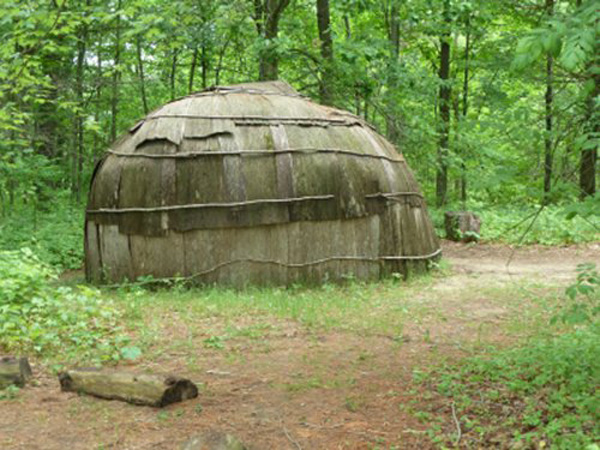
“Chogan and his family needed a structure that could support the heavy snow and also provide shelter from the harsh northern winters. The dome shape of the wigwam has natural strength, and any snow that accumulated on the wigwam roof provided additional insulation from the cold. Grandfather constructed his wigwam frames by inserting one end of a long pole in the ground and then bending the pole until it formed an arch with a similar pole. He lashed the poles together using the inner bark from a basswood tree. Then he added a series of tapering arches on each side of the large arch to form the wigwam’s shape. He placed his arches about two feet apart, all pointing in the north-south direction. Next Grandfather added more arches, this time in an east-west direction, perpendicular to the previous arches. Lastly, he lashed poles to the sides of the frame for extra strength.
Native Americans used a variety of materials to cover their wigwam frames. Grandfather preferred birch bark, because it was so abundant along the Lake Superior shore, but he covered the sides of his wigwam with mats made from woven cattail reeds. Elm bark was another favorite among some Native Americans because it could be obtained in large sheets and quickly covered the wigwam frame. They tied the bark to the frame with strips of basswood bark.”
More at the source: The White Feather.com
(Additional photos show benches on the inside that were used for sitting and sleeping.)

A wigwam would make a good temporary shelter to live in while building something more permanent. Can’t complain about the price — it’s free.